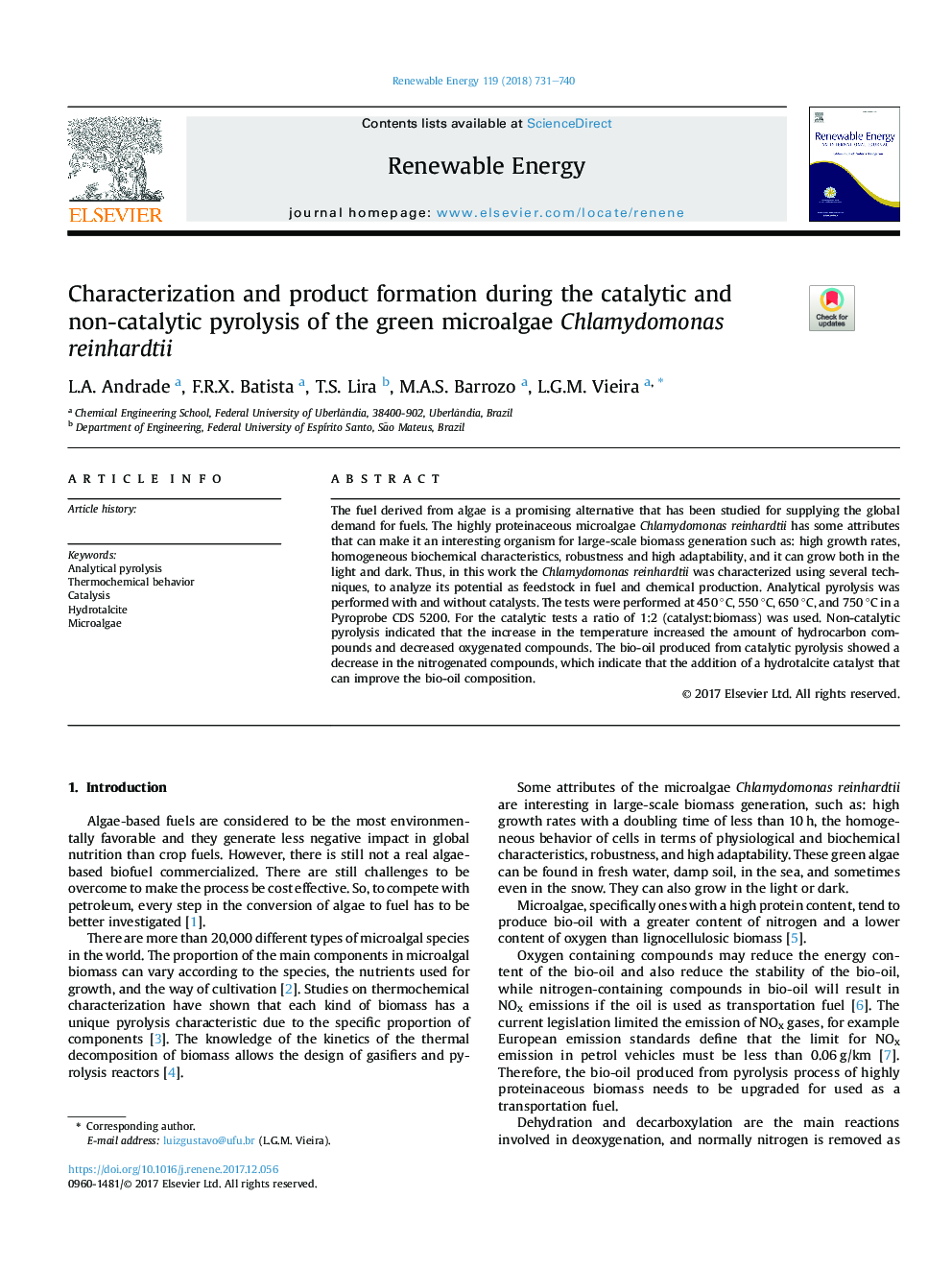| Article ID | Journal | Published Year | Pages | File Type |
|---|---|---|---|---|
| 6765003 | Renewable Energy | 2018 | 10 Pages |
Abstract
The fuel derived from algae is a promising alternative that has been studied for supplying the global demand for fuels. The highly proteinaceous microalgae Chlamydomonas reinhardtii has some attributes that can make it an interesting organism for large-scale biomass generation such as: high growth rates, homogeneous biochemical characteristics, robustness and high adaptability, and it can grow both in the light and dark. Thus, in this work the Chlamydomonas reinhardtii was characterized using several techniques, to analyze its potential as feedstock in fuel and chemical production. Analytical pyrolysis was performed with and without catalysts. The tests were performed at 450â¯Â°C, 550â¯Â°C, 650â¯Â°C, and 750â¯Â°C in a Pyroprobe CDS 5200. For the catalytic tests a ratio of 1:2 (catalyst:biomass) was used. Non-catalytic pyrolysis indicated that the increase in the temperature increased the amount of hydrocarbon compounds and decreased oxygenated compounds. The bio-oil produced from catalytic pyrolysis showed a decrease in the nitrogenated compounds, which indicate that the addition of a hydrotalcite catalyst that can improve the bio-oil composition.
Related Topics
Physical Sciences and Engineering
Energy
Renewable Energy, Sustainability and the Environment
Authors
L.A. Andrade, F.R.X. Batista, T.S. Lira, M.A.S. Barrozo, L.G.M. Vieira,
